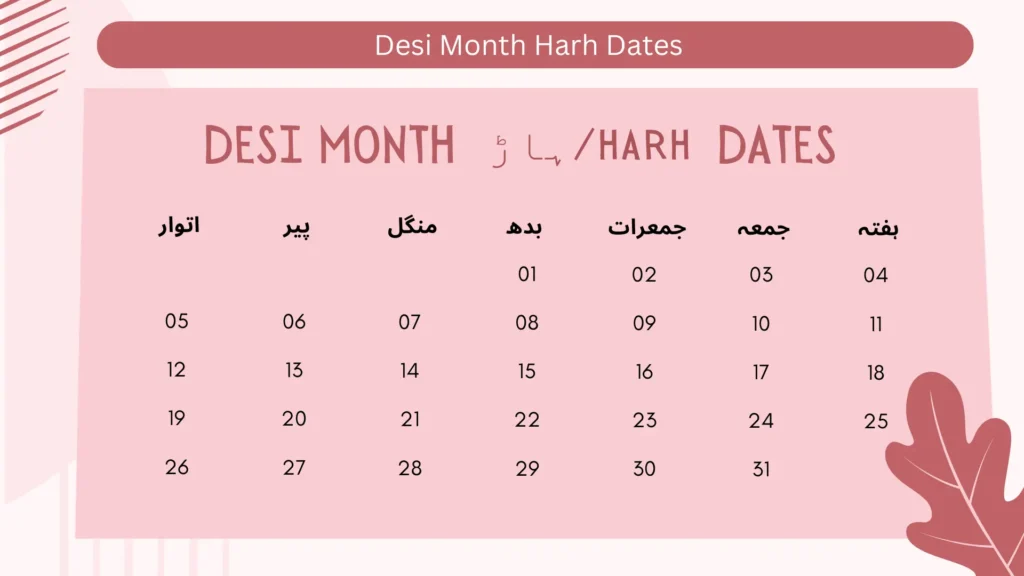Desi Month Harh Dates 2024 Aligned with English (Gregorian) Dates
You can easily find the dates for the Desi month Harh in 2024, matched with the English calendar. This helps you keep track of important dates for cultural, religious, or personal reasons. The Harh dates are shown in both Desi and English formats, and You can even check today’s Desi month date, Sangrand, and Gurpurabs. Additionally, discover other Desi month dates for 2024: Chet, Vaisakhi, Jeth, Sawan, Badhon, Assu, Katak, Maghar, Poh, Magh, and Phagun.
Understanding the Desi Calendar

The Desi calendar is popular in the Indian subcontinent, especially in rural Punjab. It is an agricultural calendar closely tied to the seasons and farming cycles. The Desi month of Harh lasts from June 15th to July 15th in the English calendar. This time is important for farmers, as well as for weather patterns and cultural festivals for Muslims, Sikhs, and Hindus.
Weather During the Desi month Harh
Festivals and Cultural Significance during Desi month Harh
Desi month Harh is rich in cultural festivals celebrated by Muslims, Sikhs, and Hindus.
Muslim Festivals
10th of Harh – Ashura
Shia Muslim Observance: The 10th of Harh, called Ashura, is a very important day for Shia Muslims. It remembers the martyrdom of Husayn ibn Ali, the grandson of Prophet Muhammad, at the Battle of Karbala. On this day, Shia Muslims participate in mourning processions, recite elegies, and perform reenactments of the battle. They gather in mosques and community centers to honor Husayn’s sacrifice and his stand for justice and against oppression.
Rituals and Practices
Eid-ul-Adha
Eid-ul-Adha, also known as the Festival of Sacrifice, may occur in the month of Harh, depending on the lunar calendar. This festival honors Prophet Ibrahim’s (Abraham’s) willingness to sacrifice his son as an act of obedience to God. Muslims around the world celebrate this by sacrificing an animal (usually a goat, sheep, or cow) and sharing the meat with family, friends, and those in need.
Rituals and Practices
Sikh Festivals
Hindu Festivals
Agricultural Importance of Harh
Traditional Practices and Rituals
Conclusion
The Desi month of Harh, from June 15th to July 15th, is crucial in the Indian subcontinent. The monsoon’s arrival is critical for agriculture, and the month is filled with cultural and religious festivals. Understanding Harh highlights the deep connection between nature, agriculture, and culture.
